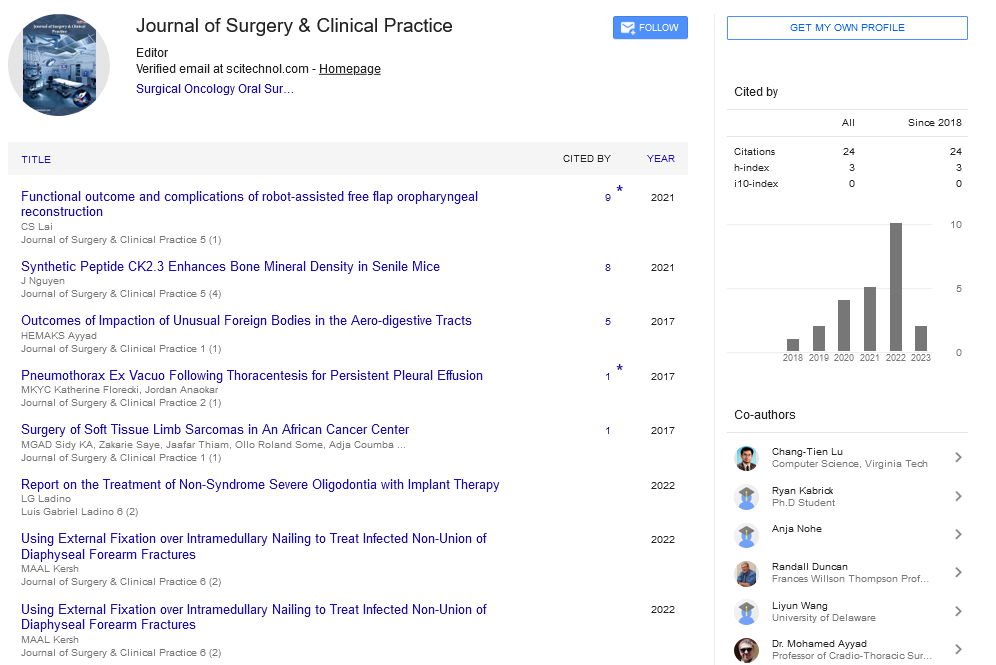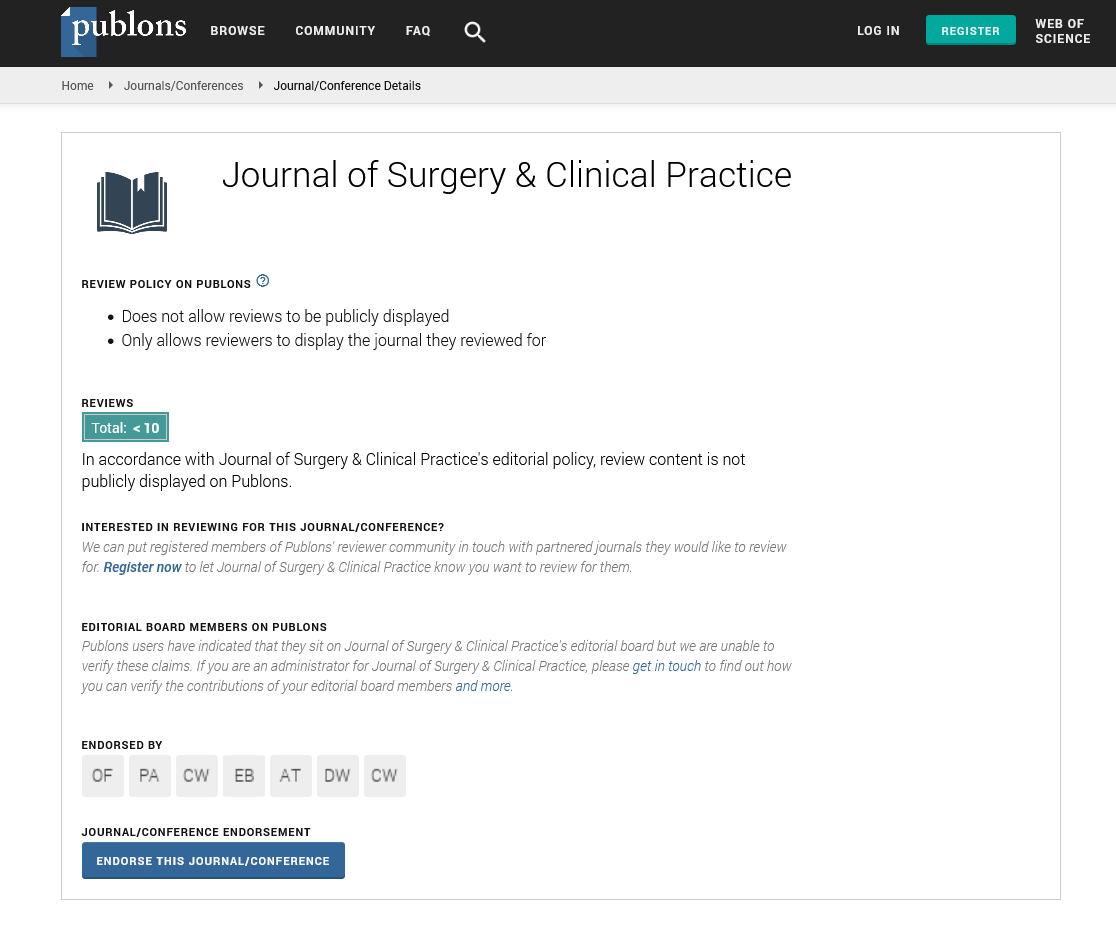Perspective, J Surg Clin Prac Vol: 7 Issue: 2
Benefits and Applications of Minimal Access Surgery
Carmen Valero*
Department of Medicine, University of London, London, UK
*Corresponding Author: Carmen Valero
Department of Medicine, University of
London, London, UK
E-mail: carmen@val.uk
Received date: 24 May, 2023, Manuscript No. JSCP-23-107204;
Editor assigned date: 26 May, 2023, PreQC No. JSCP-23-107204 (PQ);
Reviewed date: 13 June, 2023, QC No. JSCP-23-107204;
Revised date: 20 June, 2023, Manuscript No. JSCP-23-107204 (R);
Published date: 27 June, 2023 DOI: 10.35248/JSCP.23.7.100384
Citation: Valero C (2023) Benefits and Applications of Minimal Access Surgery. J Surg Clin Prac 7:2.
Description
Minimal access surgery also known as minimally invasive surgery or laparoscopic surgery has revolutionized the field of surgery by providing less invasive alternatives to traditional open procedures. This technique involves making small incisions and using specialized instruments to perform surgical procedures, thereby reducing trauma to the patient's body. The benefits and diverse applications of minimal access surgery, highlights the patient outcomes and the future of surgical practice.
One of the primary advantages of minimal access surgery is its ability to minimize trauma to the patient's body. Compared to open surgery, which requires large incisions and tissue dissection, minimal access surgery utilizes small incisions, resulting in less tissue damage, reduced postoperative pain, and faster recovery. Patients undergoing minimally invasive procedures experience shorter hospital stays, decreased risk of infections, and faster return to their daily activities, improving overall quality of life.
The smaller incisions used in minimal access surgery lead to improved cosmetic outcomes. With traditional open surgery, patients are often left with large, visible scars. In contrast, minimal access surgery leaves behind smaller, less noticeable scars, enhancing patients' physical appearance and self-esteem. This benefit is particularly significant for surgeries performed in cosmetically sensitive areas, such as the abdomen or face. This surgery has been associated with a lower risk of postoperative complications compared to open surgery. The smaller incisions result in reduced blood loss, decreased risk of wound infections, and a lower chance of developing hernias or other surgical site complications. The precise visualization provided by laparoscopic instruments allows surgeons to navigate complex anatomical structures with greater accuracy, minimizing the risk of inadvertent damage. Minimal access surgery has a wide range of applications across various surgical specialties. Laparoscopic techniques have become the gold standard for procedures such as cholecystectomy (gallbladder removal), appendectomy (appendix removal), and hernia repair. Additionally, minimal access surgery is used in gynecology for procedures such as hysterectomy and myomectomy, in urology for prostate or kidney surgery, and in orthopedics for joint surgeries, among others. The versatility of minimal access surgery enables its application in diverse medical fields, benefitting patients across different specialties. The use of laparoscopic instruments equipped with high-definition cameras provides surgeons with enhanced visualization during the procedure. The magnified view of the surgical field allows for improved precision and accuracy, reducing the risk of errors. Surgeons can maneuver instruments with greater dexterity, enabling delicate and intricate procedures that were previously challenging with open surgery. This enhanced precision translates into better surgical outcomes and increased patient safety. While minimal access surgery may require specialized equipment and training, it can lead to cost savings in the long run. Shorter hospital stays, decreased postoperative complications, and faster recovery times result in reduced healthcare expenditures. Additionally, minimal access surgery allows for outpatient or ambulatory procedures, eliminating the need for prolonged hospitalization. The economic benefits of minimal access surgery make it an attractive option for healthcare providers and patients alike.
This surgery continues to evolve with ongoing advancements in technology and techniques. Robotic-assisted surgery is one such advancement, combining the benefits of laparoscopic surgery with the precision and versatility of robotic systems. This technology allows for enhanced maneuverability and improved surgical outcomes. Additionally, the development of miniaturized instruments and Single- Incision Laparoscopic Surgery (SILS) further reduces surgical trauma and improves cosmetic outcomes. These advancements demonstrate the promising future of minimal access surgery, with the potential for even more refined and specialized procedures. As the field progresses, it is essential for healthcare professionals to further develop this less invasive approach, ensuring that patients can benefit from its advantages in various surgical disciplines.
 Spanish
Spanish  Chinese
Chinese  Russian
Russian  German
German  French
French  Japanese
Japanese  Portuguese
Portuguese  Hindi
Hindi 
